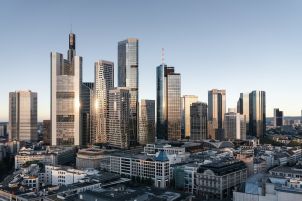A crisis that has affirmed remote working
About three in ten organisations expect more than 70% of their employees to work remotely in the next two to three years, up from just one in ten before Covid-19. Remote working has established itself as a practice that makes it possible to maintain activity in times of crisis, but it has also revealed a revival in working methods, responding to new demands and needs.
The impact is felt differently across Europe
The Covid-19 pandemic and the successive lockdowns across Europe have affected European countries differently. This explains, in part, why they have adopted different strategies regarding the management of real estate and human resources. This is also noticeable when it comes to the return-to-office strategy. In September 2021, while the on-site work rate was 15-25% in Ireland, it reached 75% in Spain and France.
A moderate vacancy rate in Europe and a stable performance of prime assets
Despite a noted increase, the office vacancy rate remained at a reasonable level in Europe. After several years of consecutive increases, prime rents have for the most part weathered the crisis unscathed. These have even increased in certain markets, such as Paris or Berlin, proving that the best assets and the most sought after locations remain as attractive as ever.
Offices remain a solid investment option
The total volume invested in real estate reached €272.7 million in Europe in 2021, an increase of 15% compared to 2019. Despite what was a complex period during the pandemic, investment in offices remained stable thanks to the rollout of remote working.
Increased consideration of ESG criteria
ESG criteria have become central when it comes to constructing workplaces. The office of tomorrow must be increasingly in line with the environmental objectives set by the UN (United Nations), but it must also be more inclusive and champion the well-being of its occupants.
Integrating corpoworking into a hybrid model
Third places have proven to be an excellent alternative to working from home. A real link between the office and remote work, making them an interesting new real estate offer. Corpoworking allows investors and occupiers to transform their surfaces in order to create hybrid environments that reflect their values. This is an ideal solution for employees who can work in connected and adaptable spaces, closer to their homes, but also for companies, which can optimise their management costs and make their m2 profitable.
The office: a new mobility hub
More than ever, office real estate integrates transportation methods into the heart of its environment with parking and charging solutions for electric vehicles as well as leasing and/or car-sharing offers. If the office is a destination, it must remain accessible for all.
Versatile and modular spaces promote interactions and foster creativity
Offices must capitalise on their ability to innovate, whilst at the same time being able to respond to different way of using them Being able to adapt over time and even become reversible are must haves for an office that is able to stand up to the challenges of the future.
Mixed-use buildings mean resilient cities
A building which can truly be considered mixed is now one of main solutions needed in creating a resilient city and further bolstering the unique appeal of offices. In order to be considered mixed, a building must be able to fulfill several functions by integrating, for example, food courts, shops or places open to the city and its inhabitants.
Putting the human at the centre of human centric Property Management
The quality of the services offered by Property Management proved vital during the crisis. The management of real estate today places people at the heart of the activity and responds to the specificities of each company. Coupled with precise management made possible by the use of data, Human Estate is asserting itself as a driver of the performance of assets and employees.




